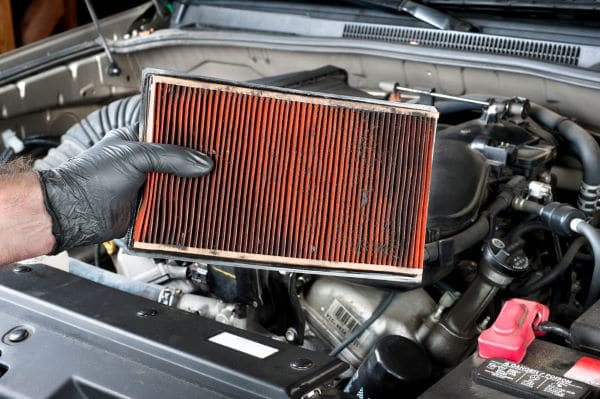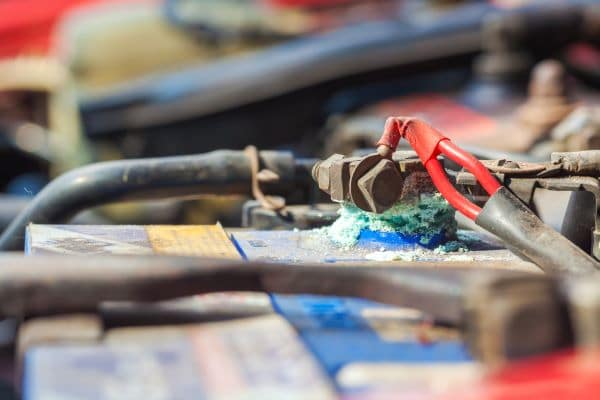Do you have to turn the key multiple times to start the car? This situation can be frustrating and create plenty of headaches. It’s even more confusing when you evaluate all the reasons that the car takes multiple tries to start. To narrow down the options, it’s important to figure out if the car is difficult to start when it is hot or cold. In some cases, it might happen all of the time.

We look at the reasons the car takes 2 tries to start in various situations. With a little troubleshooting, you will be able to figure out the culprit and get back on the road.
Table of Contents
Reasons Car Takes Several Tries to Start When Cold
If the engine is cold and you are having trouble starting it, you are probably looking at the fuel or ignition systems. Here are a few things to consider.
Faulty Ignition System
Defective spark plugs can lead to a lot of starting issues. They can also lead to reduced fuel efficiency, misfiring and a reduction of power. Spark plugs should be replaced as part of the regular maintenance. If you have neglected this task, you might want to do it now.
If it isn’t the spark plugs causing trouble, you will want to look at the rest of the ignition system. It’s always possible that the ignition coil or spark plugs wires are to blame. In some cases, the engine might turn over but not start.
Defective Fuel System
Without the right amount of fuel pressure, it can become difficult to start the engine. On a cold engine, this occurs because the pressure is leaking out or not able to build up. In this case, you might not notice the problem once the engine is warmed up.
However, there are a lot of parts that could cause this issue. It’s possible you are dealing with a faulty:
- Fuel injector
- Fuel filter
- Fuel pressure regulator
- Fuel pump or check valve
- Fuel line
You can easily check if the fuel system is to blame. Have a friend crank the engine while you spray some starting fluid onto the throttle body. If the engine starts and stops while you are doing this, your issue is coming from the fuel system.
You might simply need to replace the fuel filter. If you haven’t been performing this regular maintenance, it’s time to do it now. Here’s a helpful video that illustrates the proper steps.
Malfunctioning Sensor
Your vehicle uses a variety of sensors to ensure the proper air-fuel ratio. If one of these sensors fails, you might have trouble starting the car. A defective sensor can also cause the Check Engine Light to come on.
Here are a few sensors that might be causing the problems:
- Mass air flow sensor (MAF)
- Throttle position sensor (TPS)
- Air temperature sensor (AT)
- Coolant temperature sensor
If you use an OBDII scanner, the codes should indicate which sensor is causing trouble.
Reasons Car Takes Several Tries to Start When Hot
What do you do if you have to turn the key multiple times to start the car only after the engine is hot? Here are a few parts that could be causing your trouble.
Faulty Fuel System Delivery
If the flow of fuel can’t reach the combustion chamber, it could be difficult starting the engine. In some cases, this only happens after the engine is warmed up. For starters, you should look at the fuel filter. If it is clogged, you can replace it to solve the issue.
Additionally, a bad fuel pump can work great when it’s cold but start to act up once it has been running for a few minutes. It can even cause the car to stall while driving.

Clogged Air Filter
Changing the air filter is also an essential part of regular vehicle maintenance. If you aren’t changing the air filter, it can quickly become clogged with dirt. This defect restricts the level of air making its way to the combustion chamber, but it might only be noticeable once the engine is hot.
Poor Engine Ground Connections
If your vehicle has a bad ground connection, there will be unwanted resistance to the circuits. As the engine warms up, the heat can create resistance, causing issues starting the car.
Your vehicle could have several ground straps between the body and the engine, serving as a pathway for electrical currents. If one of these connections is damaged or torn, there will be interference.
You can check the engine grounds with an automotive multimeter.
- Disable the ignition and fuel system by removing the appropriate fuse and disconnecting the ignition coil.
- Connect the ignition coil wire to a ground with a jumper wire. This step ensures the engine doesn’t start.
- Set the multimeter to the appropriate setting – low range direct current (DC).
- Have your helper crank the engine, but not for more than thirty seconds at a time.
- Connect the meter to the black negative post on the battery with the black lead.
- Connect the red lead of the meter to a metal surface on the engine that’s unpainted.
- Read the display. The voltage drop should be less than 0.3 volts. If it is above this, there might be resistance from the ground.
To resolve this situation, you will need to inspect the ground connections. If you find any that are damaged, contaminated or loose, you can repair them.
Defective Sensors
As with the cold engine section, any number of sensors can also cause trouble when the engine is hot. With your code scanner, you can learn more about what’s happening with the engine and the DTCs it is throwing. With this information, it’s much easier to repair the fault.
Reasons Car Takes Several Tries to Start When Hot/Cold
If the car takes multiple tries to start, no matter what temperature the engine is running at, you could look at these possible issues.
Faulty Charging System
The most common reason that the car won’t start or is struggling is because of a dying automotive battery. You will want to check the health of your car battery, which is simple to do. If you don’t have a multimeter, you can take it to a local auto parts store, where they offer free battery checks.
If the battery is good, or you replace it and it dies again, you might be having trouble with the alternator instead. You can test the alternator by disconnecting the battery or follow these steps to use a screwdriver instead.
- Open the hood.
- Locate the alternator. You can find more information in your service manual.
- Place a screwdriver by the pulley bolt on the alternator.
- Turn the key to the ON position. The engine isn’t going to start, but you should see the dashboard lights come on.
- The screwdriver should be pulled toward the pulley bolt. If so, the alternator is working as it should.
If there is no magnetism, you need to replace the alternator or have further tests done. However, if you use a rusty screwdriver, the test results might not be accurate.
Defective Starter
If the starter motor becomes weak, it can take longer to get the car started. Eventually, the starter motor will fail completely, making it impossible to crank the engine over.
Starters can go bad at any time because of damage or oil leaks. It’s also possible that the starter simply has a loose wire, dirty connection or corrosion blocking the signal.
If the starter hasn’t failed completely, you might be able to tap on it and get it going. Here’s an example of what that looks like.
Don’t ever pound on the starter; it should only require a few taps. You will also need a helper to crank the engine while you do it. Remember to be careful!
Vacuum Leak
Each engine contains vacuum hoses that can end up with a leak. If there is a leak, you might have trouble getting the engine running and you might notice issues with the idle. The engine can also hesitate and create sucking sounds, sort of what you hear with a vacuum cleaner.
You will need to perform a visual inspection of the vacuum hoses for any wear or damage. You can trace each hose with your hand while you check them. In some cases, a mirror might be needed.
You can also use a vacuum gauge to look for leaks. Here’s an example of what this procedure would look like.
If you don’t own a vacuum gauge, you might be able to borrow one from the local auto parts store.
Malfunctioning Ignition System
As discussed with the cold engine, the ignition system can easily lead to trouble that prevents you from starting the car. As carbon builds up on the spark plugs, they can foul and prevent the engine from cranking over.
Failing Fuel System
We have discussed the fuel system parts that might be causing issues. All of these should also be checked if you can’t get the car started in either condition. Look at the fuel filter, fuel injectors, fuel pump and pressure regulator.
What to Do When the Car Won’t Start
What should you do if you are late for work and you can’t get the car started? Obviously, now is not the time to try and diagnose mechanical problems. There are a few steps you can take that might get you back on the road temporarily.

Check the Battery
Your first step is to look at the battery and its connections. In some cases, a cable might have come disconnected, leading to trouble starting the car. There could also be corrosion on the terminals that might cause a disruption. If you notice battery corrosion, it doesn’t take more than a few minutes to clean it with baking soda and water.
Cycle the Key
If you hear a quick click when you try to start the car, you might try cycling the key. This process warms up the starter, creating a workaround for a short time.
- Take your key from the OFF position to the START ten times in a row.
- Wait a couple of minutes and try to start the car again.
If that doesn’t work, give it one more try before giving up.
Play with the Shifter
If you hear nothing when you try and start the car, you might be able to use the “subtle” shift to get results.
- Put your foot on the brake.
- Shift the car into Neutral.
- Put it back in Park.
- Try to start the car again.
Occasionally this step can work because the electrical contact in the transmission range selector gets reestablished from the movement. However, this is really your last-ditch effort to get back on the road.
Call for Help
If none of the tips helped to get your car running, you would need a professional to look at it. Some of the defects we listed can be tested by anyone with a little automotive experience, while others require advanced tools and knowledge. Troubleshoot it the best you can and quit when it becomes too much.
Final Thoughts
If you have to turn the key multiple times to start your car, all hope is not lost. In some cases, you only need to fix a loose connection or change a filter to get back on the road. Hopefully, walking through our guide provided the answers you need to get your car running again.
